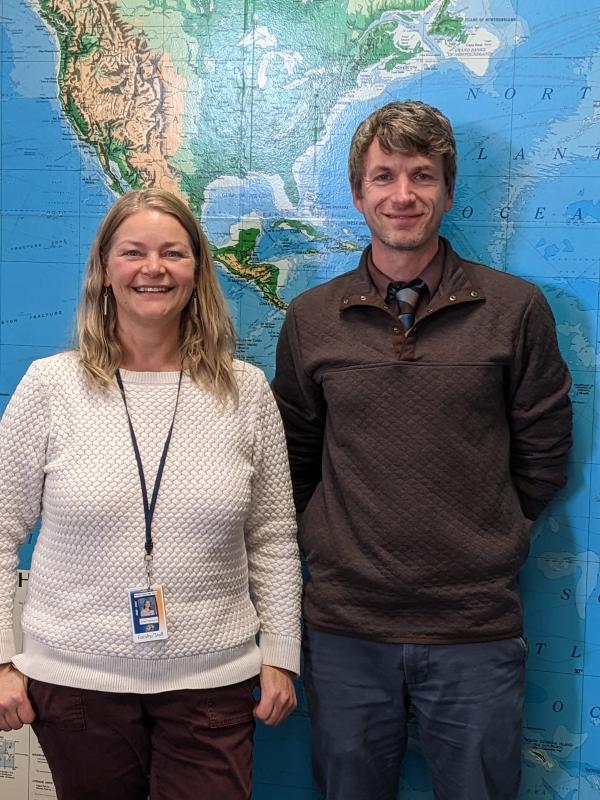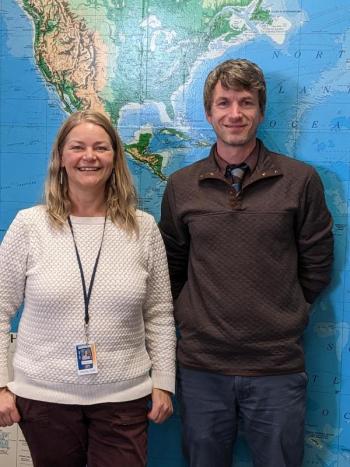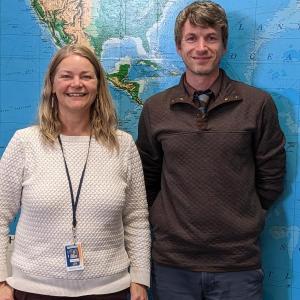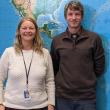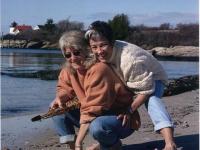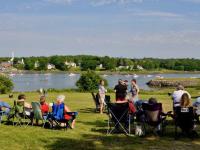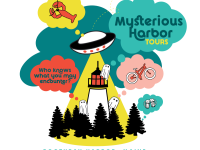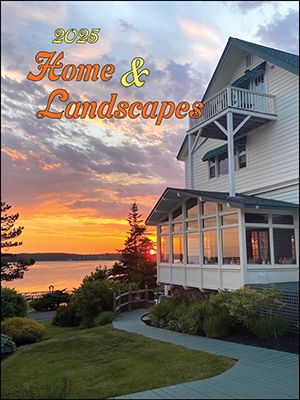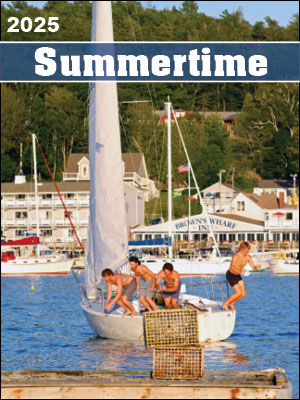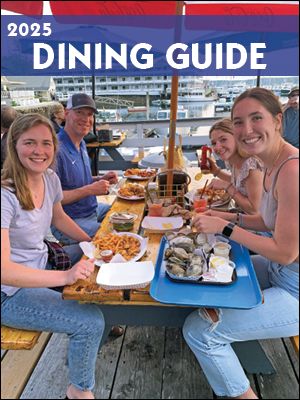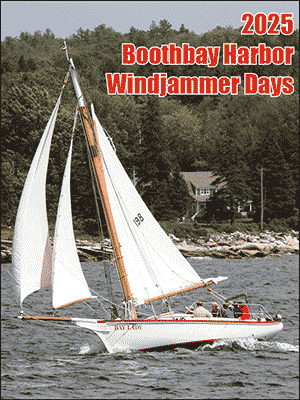Making connections, gaining insights
Boothbay Region High School (BRHS) teachers Tanya Hammond and Nick Scott have leveraged an opportunity to combine their curricula into an integrated, multidisciplinary, ninth grade honors class blending English language arts (ELA) and social studies.
“The classes were combined coming back from COVID, to be less overwhelming to students,” Hammond said. Given the hurdles students faced in their return to in-person learning, she and Scott piloted a class that integrated their subjects when overlap in the syllabus occurred, providing opportunity to reinforce learning.
Learning about related content in more than one class helps students dive deeper into the subject as their knowledge is expanded and they examine the topic from more than one perspective, to experience how the subject relates to the real world, Scott said.
Scott is not new to interdisciplinary study. Every other year, he co-teaches a making and marketing elective with science, technology, engineering, art and math (STEAM) teacher Chip Schwehm, and incorporates financial literacy and technology into the classroom, earning him BRHS’ Outstanding Teacher Award in 2020.
Hammond is also well-experienced in incorporating technology into the classroom. Her tech contributions to ELA and the combined course include infographics, use of sound and images in presentation, and the course’s final project, a TED talk on globalization and its impact on the students as individuals.
“It can be hard to see the ELA part at times,” Hammond said. But that very notion of invisible learning makes the course work so well: “It’s seamless,” Scott said.
Students still receive two separate grades, one for social studies and one for ELA, and the course spans two periods, allowing required time. Hammond and Scott rotate lead and supporting roles as the curricula move through each’s area of expertise and they share grading responsibilities accordingly. While the content overlaps a lot, some objectives are unique to ELA or social studies.
Creative writing projects tend to fall outside the scope of the combined curricula, Hammond said. A typical course of study for ninth grade language arts includes grammar, vocabulary, literature and composition. Students cover literary analysis, public speaking, drafting reports and citing sources. “Most of these topics correlate well with social studies’ seven elements (geography, economics, history, culture, political science, government, technology),” Scott explained.
“We are fortunate to have a supportive administration and community,” Hammond said. The course, now in its second year, “fingers crossed is here to stay,” she added. Encouraging kids to see connections among the disciplines is key; the world is not boxed off based on disciplinary boundaries, Hammond said.
In 2009, Clinton Golding and The Centre for the Study of Higher Education published findings from a multi-year inquiry. The conclusion was, “knowledge from multiple disciplines produce(s) something greater than would be possible from any one disciplinary perspective.” Maine Department of Education echoes the sentiment. Its website provides expert advice to teachers and instructors on how to build interdisciplinary studies programs, covering ELA, health, math, career readiness, physical education, science and engineering, social studies, foreign language, visual and performing arts, and early learning.

